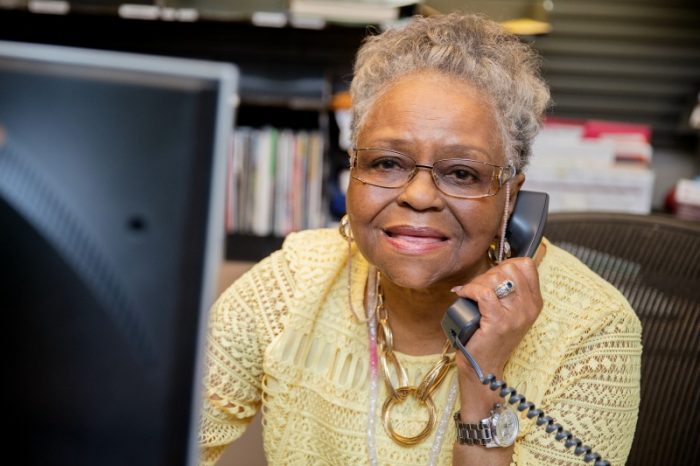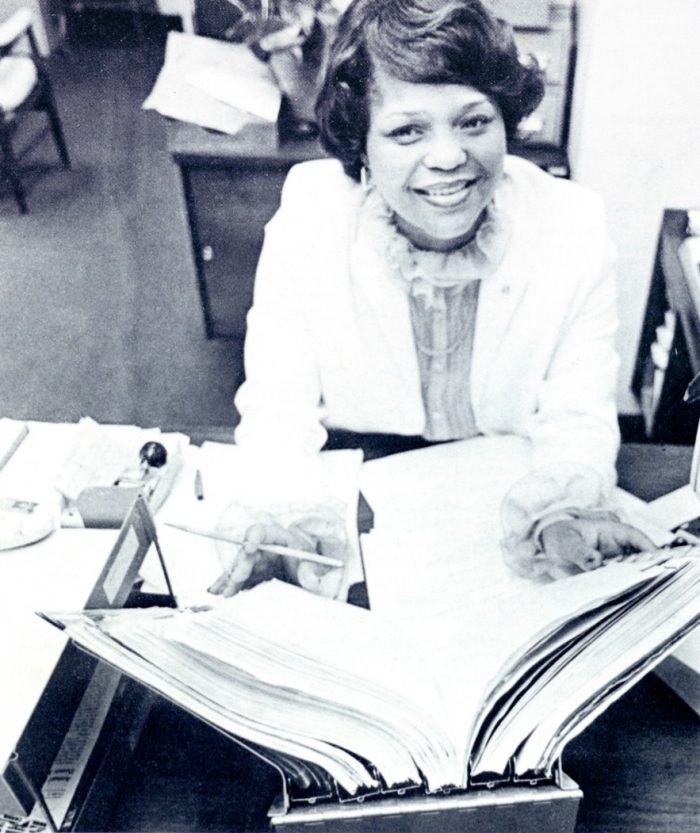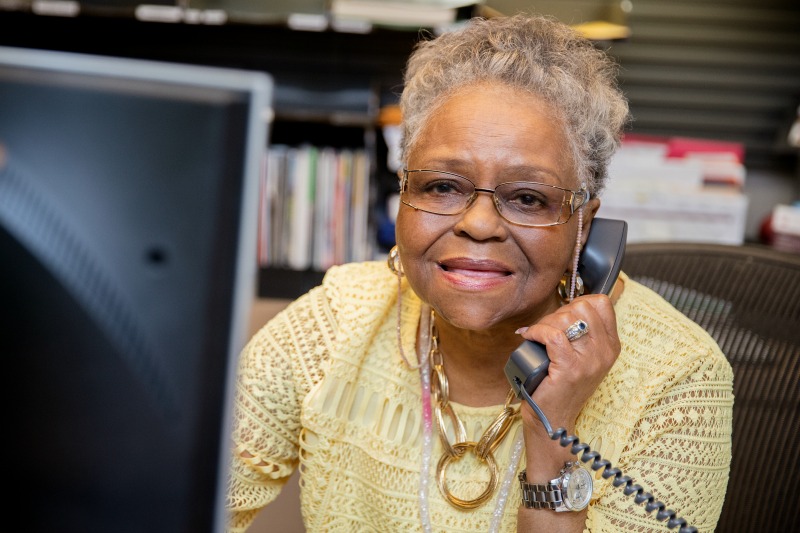
After 58 years of service, a monumental change is set to occur at the end of 2017 for both Cedars-Sinai Medical Center and Marvelene Bickerstaff, their longest serving employee. At age 80, after 58 years of working at the hospital, Mrs. Bickerstaff has decided it is finally time to retire. She is perhaps one extreme example of those who have been the steady backbone of this country and her family.
“I’m either stable or boring,” said Mrs. Bickerstaff who has been a member of St. Andrew Missionary Baptist Church for 50 years. She has been married to her husband, Ernest Bickerstaff, for 62 years.
She is the mother of three children who have all gone on to have successful careers as a result of their mother’s work ethic. In discussing her extended time, Mrs. Bickerstaff explained that she stayed in order to support her three children through school and she enjoyed her work.
“[One] reason I worked for so long is so I could put my youngest through pharmacy school,” Mrs. Bickerstaff said proudly.
There have been countless changes in the workplace since Mrs. Bickerstaff began as a nurse’s aide at Cedars-Sinai 58 years ago. At that time, typewriters were used to type doctor’s resumes applying to be instated to the hospital and rotary phones were used to answer patients’ inquiries.
“I feel fulfilled because I’ve solved a lot of people’s problems,” remarked Mrs. Bickerstaff. “If you’re a patient here, sometimes you just want to be heard, so I let them talk.”
It is this attitude that has made her a prized employee among her colleagues earning her the President’s Award for outstanding quality work performance in 2001, one of the highest honors bestowed upon exemplary employees at Cedars-Sinai. Within monthly department meetings, she has been designated to provide the final comments each meeting in recognition of her ability to heighten staff morale.
Now, each night she lays out her outfit for the next day to prepare for her 6 a.m. commute, where she is picked up and driven to Cedars-Sinai each day.
“I still like to match,” Mrs. Bickerstaff joked dressed in her coordinated two-piece silver floral suit with snakeskin pumps to match.
For the last 20 years, Mrs. Bickerstaff has worked as the receptionist for the Community Relations Department, where she answers phones and greets people as they enter.
“What would [the department] be without Marvelene at the front door,” said Mrs. Bickerstaff’s former boss Barbara Scottini, Cedars-Sinai’s Associate Director of Community Relations.
As one can imagine, after being at Cedars-Sinai for 58 years, Mrs. Bickerstaff has become “part of the furniture” as Scottini put it. It all started when Mrs. Bickerstaff, her husband and their two young children journeyed from her hometown of Cleveland, Ohio to Los Angeles. She had worked at a local hospital in the nursery in Cleveland. It was one of the first times that she viewed prejudice on an institutional level.
“At that time the Black babies were on one side and the white babies on another,” Mrs. Bickerstaff remembered.
When she moved to Los Angeles, she decided to continue in the medical field. Cedars-Sinai was called Cedars of Lebanon. Mrs. Bickerstaff says it was the first hospital to give her a call back. In 1959, she joined the staff as a nurse’s aide or as they were called then, “green girls.”
“I probably weighed about 98 pounds and we wore these green dresses with the belts around them,” recalled Mrs. Bickerstaff in explaining the reason the aides were called green girls. “We had to do [my belt] twice around because I was so skinny.”
The “green girls” were responsible for patient care including insuring patients had water, taking their temperature and changing bedpans.
“I just needed a job, no way I thought I’d be here this long,” said Mrs. Bickerstaff smiling.

In 1976, a merger between Cedars of Lebanon with Mount Sinai birthed Cedars-Sinai, Mrs. Bickerstaff moved with the hospital. While she has worked in various capacities over the years, there is still one job Mrs. Bickerstaff wishes she could check off the list.
“I always wished I was a nurse because I like helping people,” said Mrs. Bickerstaff. She says that money and time were the main reasons she was never able to accomplish this goal. Despite her short list of regrets, she says she is grateful for her time, as it has enabled her to support her family and bear witness to the evolution of the hospital.
“I remember when I would go out to lunch and doctors would be smoking on the bridge,” said Mrs. Bickerstaff. “Doctors would even smoke in the hospitals.”
In 2010, Cedars-Sinai became a smoke-free campus. While she feels this was clearly a change for the better, there are still several areas that she believes could use significant improvement, some of which have persisted throughout her career.
“I see about the same amount of Black doctors now as when I started,” said Mrs. Bickerstaff. “It’s important to have Black doctors because you have Black patients.”
Perhaps a simple concept, but she says she often hears from patients that there is a certain level of comfort and understanding that comes from having a doctor who looks like you.
One of the things Mrs. Bickerstaff likes about her current position is that as a Black woman, she is the first point of contact in the Community Relations Department. For her, it suggests what she thinks should be true in all areas of the hospital, that there is diversity in staffing just as in the community that Cedars-Sinai serves.
“It’s a responsible position and she has done it so long, you don’t have to think about the job being done right,” said Scottini. “You never know what you’re going to get with someone new taking over the position when she retires.”
As retirement is ever closer, Mrs. Bickerstaff reflects that she is looking forward to it as it will allow her to do the three things that she loves aside from working: going to church, shopping and going to casinos.







